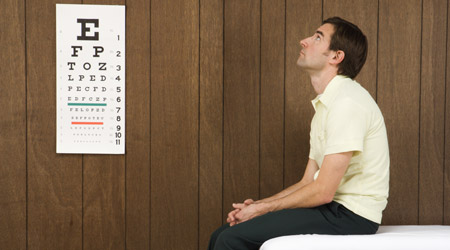
5 Design Considerations in Medical Office
May 2, 2017
The medical industry may be on the cutting edge of healthcare technology, but many offices are sadly outdated. But it's not just about looks. Staying up to date on latest design in medical offices goes beyond pure aesthetics.
Improved patient well-being, increased safety for staff, and reduced business costs are all benefits that come with focused office design. Here are five design trends that can work well for any medical office.
1) Replacing Halogen and Incandescent Lights with LED Lighting
Replacing dated lighting systems with new LED lights is an important trend in medical office design. This trend has steadily been growing since it offers multiple benefits that can't be ignored.
First are the cost savings. While the initial budget required for LED lighting is more expensive than traditional lighting, the overall savings make it worthwhile. They have a longer lifespan, require less maintenance, and produce less heat, which aids overall HVAC savings as well.
LED can also offer more attractive lighting options, particularly in medical office lobbies where recessed lighting can really make a great impression. LED lighting is incredibly versatile for medical offices as they are ideal for ambient lighting (indoors and outdoors) as well as medical-specific uses. LED is especially useful for headlights or mobile exam lights since they are cooler to the touch and less likely to break.
2) Providing Heated Exam Tables and Other Patient Warming Devices
A common yet easily remedied patient complaint often involves the cooler temperatures in exam rooms. Thin gowns hardly provide warmth, particularly for patients that are already more sensitive to cold. Elderly patients have a more difficult time keeping warm, as well as very young patients or those with an illness that affects body temperature control.
Providing heated blankets is a long-time standby and becoming more commonplace in various medical offices. Ensuring these are on hand and offered to patients is important. Offices that work with a significant number of elderly patients should also consider investing in heated exam tables. Similarly, heated surgery tables can be very useful since surgery rooms tend to be cooler than exam rooms.
3) Installing Wall Systems that Improve Patient Comfort
Special attention should be paid to both interior and exterior wall systems. Rather than going a traditional route, consider constructing with wall systems that provide noise reduction and improved insulation.
Noise buffering is important for both interior and exterior walls. This will block outside noise and provide a calmer atmosphere within the office. Inside, focus on providing greater patient privacy.
Heating and cooling costs are a huge cost for medical offices. Consider wall systems that will support more stable inside temperatures through better insulation values.
4) Making a Good Impression with Waiting Areas
One of the most important rooms within any medical office is the lobby or waiting room. The average patient spends 20 minutes waiting in this room. This is a fairly significant amount of time to spend waiting, especially if the actual exam ends up being short. Therefore the lobby needs to feel inviting and fresh, and one way to do this is to remodel with eco-friendly materials.
A popular eco-friendly material being used in interior design is bamboo. Bamboo veneers offer a welcoming, warm look, and one that feels more unique and professional than other options.
5) Updating to MRI-Compatible Equipment When Possible
The use of MRIs has increased roughly tenfold over the past decade. With MRIs becoming a common means of diagnosing patients many medical offices need to seriously consider updating to MRI-compatible equipment, devices, and furnishings. Not only do new MRI-safe room furnishings help protect patients from excessive radiation exposure, but they also keep staff safe, all while improving the accuracy of the MRI itself.
Some examples of MRI clinical equipment include step stools and instrument tables, chairs and rolling stools, hamper carts and utility racks, and IV and equipment stands.
It is vital that an office's MRI suite is free of magnetic equipment. Don't leave out the MRI waiting room either. It is possible find attractive, modern non-magnetic chairs, sofas, and tables for these applications.
The design of a medical office goes beyond simply how it looks, but rather how it gives patients confidence in the practice, enables staff to work more efficiently, and promotes consistent business growth.
This Quick Read was contributed by Paul Brown, president of Bautex Systems, and posted by Naomi Millán, senior editor of Building Operating Management. For more on medical office design considerations, check out https://www.facilitiesnet.com/1528bom
Next
Read next on FacilitiesNet












